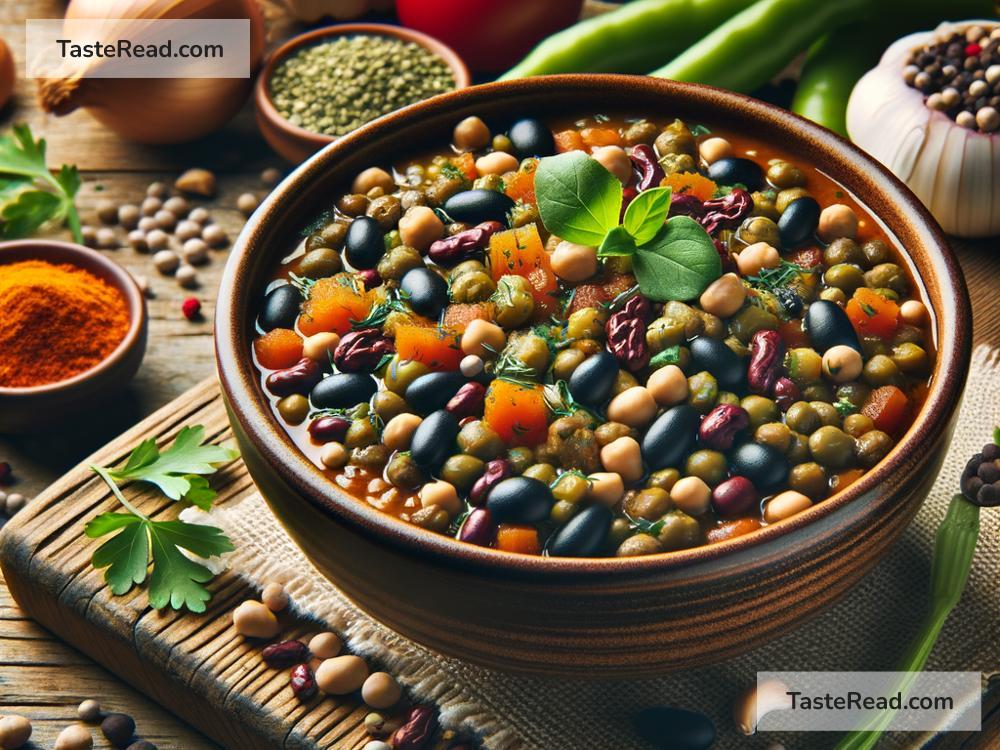Cooking with Sustainable Legume Varieties: A Guide to Greener Eating
In recent years, the push towards more sustainable eating habits has gained momentum. Among the various paths to achieve this, incorporating legumes into our diets stands out as a particularly effective and delicious option. Legumes, often hailed as the unsung heroes of the pantry, are not only versatile and nutritious but also play a significant role in sustainable agriculture. In this article, we’ll explore the world of sustainable legume varieties and how you can use them to create mouth-watering dishes.
Why Legumes?
Legumes, which include beans, lentils, peas, and chickpeas, are exceptional for several reasons. Firstly, they’re packed with nutrients – being excellent sources of protein, fiber, and vitamins. They pose as a great alternative to meat, offering the protein we need without the heavy environmental footprint. Moreover, legumes are champions of sustainability. They have a unique ability to fix nitrogen in the soil, reducing the need for synthetic fertilizers and promoting soil health. By enriching the soil in which they’re grown, they pave the way for future crops to thrive.
Sustainable Varieties to Explore
While there are countless legume varieties, some are especially noteworthy for their sustainability and ease of growth in diverse climates. Here are a few you might consider adding to your meals:
-
Lentils: Whether red, green, or brown, lentils are hearty and cook relatively quickly compared to other legumes. They require less water to grow, making them an excellent choice for drier regions.
-
Chickpeas: Known for their versatility, chickpeas can be used in everything from salads to stews to hummus. They’re resilient crops that adapt well to varied conditions.
-
Black Beans: These beans are not only a staple in many cultures but also boast a deep, rich flavor. Their ability to grow in poor soil with minimal water makes them a sustainable superstar.
-
Pigeon Peas: Perhaps less known, pigeon peas are incredibly drought-resistant, thriving in areas where other crops might falter. They’re perfect in soups and stews or as a side dish.
By choosing these and other sustainable varieties, you’re not just making a healthier choice for your body but also contributing positively to the environment.
Cooking with Legumes
Now that we’ve identified some sustainable legume varieties, let’s dive into how to cook with them. The beauty of legumes lies in their versatility. Here are some simple, yet delightful ways to incorporate them into your meals:
-
Stir into Soups and Stews: Add lentils or chickpeas to your soups and stews for a boost of protein and fiber. They blend seamlessly into various recipes, enriching the flavor and texture.
-
Create Hearty Salads: Mix cooked black beans or chickpeas with your favorite veggies, a drizzle of olive oil, and your choice of spices for a filling salad. Whether as a side or main dish, these salads pack a nutritious punch.
-
Craft Delicious Dips: Process chickpeas or black beans with tahini, garlic, lemon juice, and spices to make a delicious dip or spread. Perfect for snack time or as an appetizer.
-
Incorporate in Desserts: Surprisingly, legumes can be a great addition to desserts. Black beans can be the base for rich, fudgy brownies, while chickpeas are excellent in cookie dough recipes.
Tips for Cooking Legumes
- Soak Ahead: If you’re using dry beans, remember to soak them overnight. This reduces cooking time and makes them easier to digest.
- Experiment with Spices: Legumes absorb flavors well, so don’t shy away from experimenting with different herbs and spices.
- Cook in Bulk: Since legumes keep well in the fridge or freezer, consider cooking them in large batches. It’ll save you time and energy in the long run.
Embracing Sustainable Eating
Incorporating sustainable legume varieties into your diet is more than just a culinary adventure; it’s a step towards a more sustainable lifestyle. By choosing these eco-friendly options, you’re aligning with a mode of consumption that supports the health of our planet. It’s a win-win – for both the environment and your taste buds.
So next time you’re planning your meals, why not reach for some lentils, chickpeas, or black beans? Not only will you be treating yourself to a delicious and nutritious meal, but you’ll also be making a choice that benefits the earth. Cooking with sustainable legume varieties is an easy and effective way to contribute to a greener future, one meal at a time.


